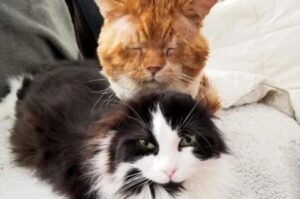In the colder months, cats tend to sleep more, eat more, and move less. While they don’t go into metabolic dormancy like true hibernators, they naturally adjust their habits to conserve energy.
Here are a few noticeable changes:
- House cats often sleep over 16 hours per day.
- They love burrowing in blankets, sitting near heaters, or basking in sunlit spots.
- Many become clingier, seeking warmth and comfort from their humans.

What About Stray Cats?
For stray or feral cats, winter can be a fight for survival. Without a safe shelter, they must:
- Find refuge in sheds, under porches, or in insulated spots like drainage pipes.
- Reduce physical movement to save energy.
- Battle sickness due to cold, wet conditions and lack of food.
Cat lovers can support their furry friends by:
- Providing warm bedding in dry, safe areas.
- Offering high-protein food to boost immunity.
- Encouraging play to stimulate activity and prevent lethargy.

Do Cats Hibernate?
Physiologically, no. Cats do not enter a state of metabolic sleep. But behaviorally, their winter mode is close to a “mini hibernation” — just without the complete shutdown.

Conclusion:
Even though cats don’t truly hibernate, their winter behavior tells a story of quiet survival and natural adaptation. Whether snuggled up indoors or searching for warmth outside, they rely on kindness and care to make it through the season.
So when the cold months roll in, remember: a little love can go a long way in warming a small feline heart.






